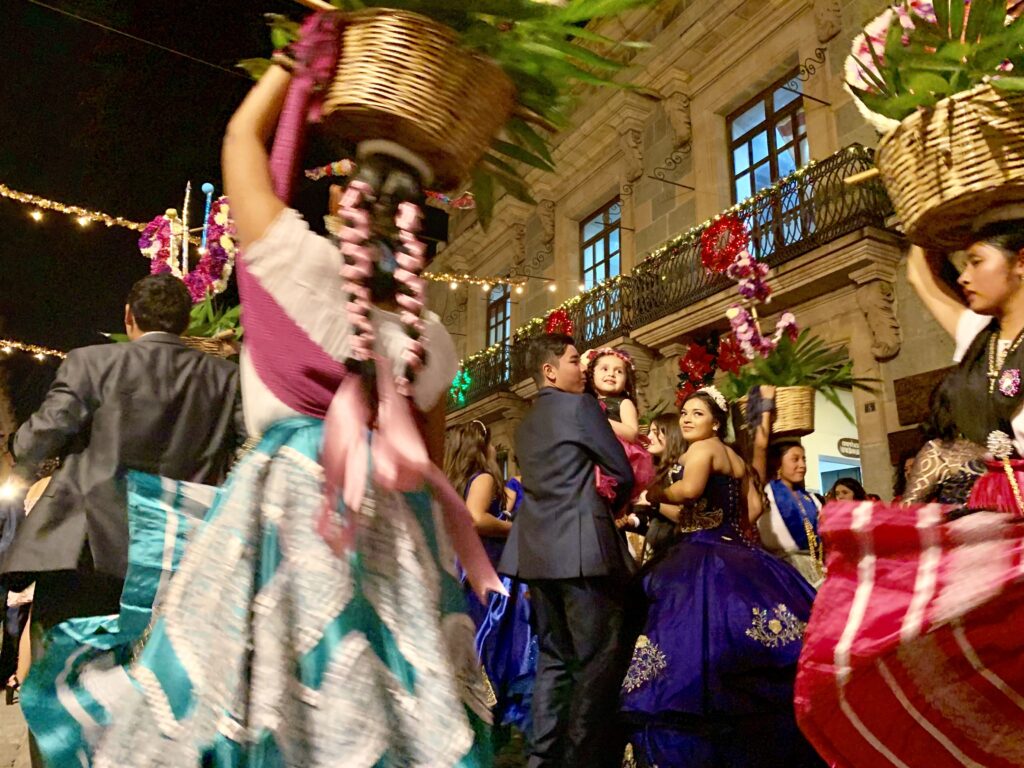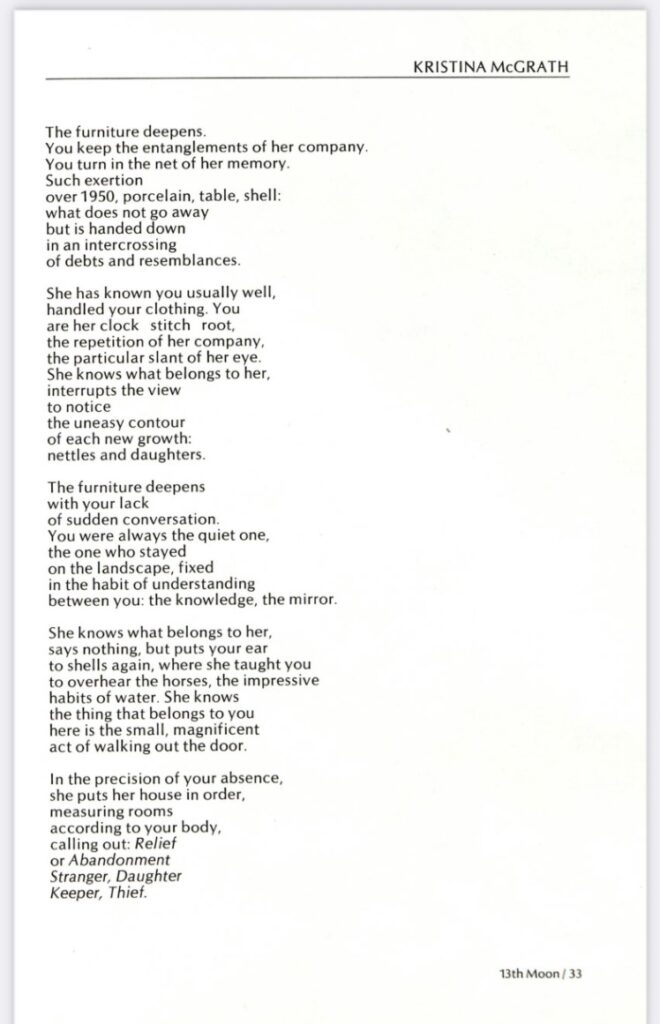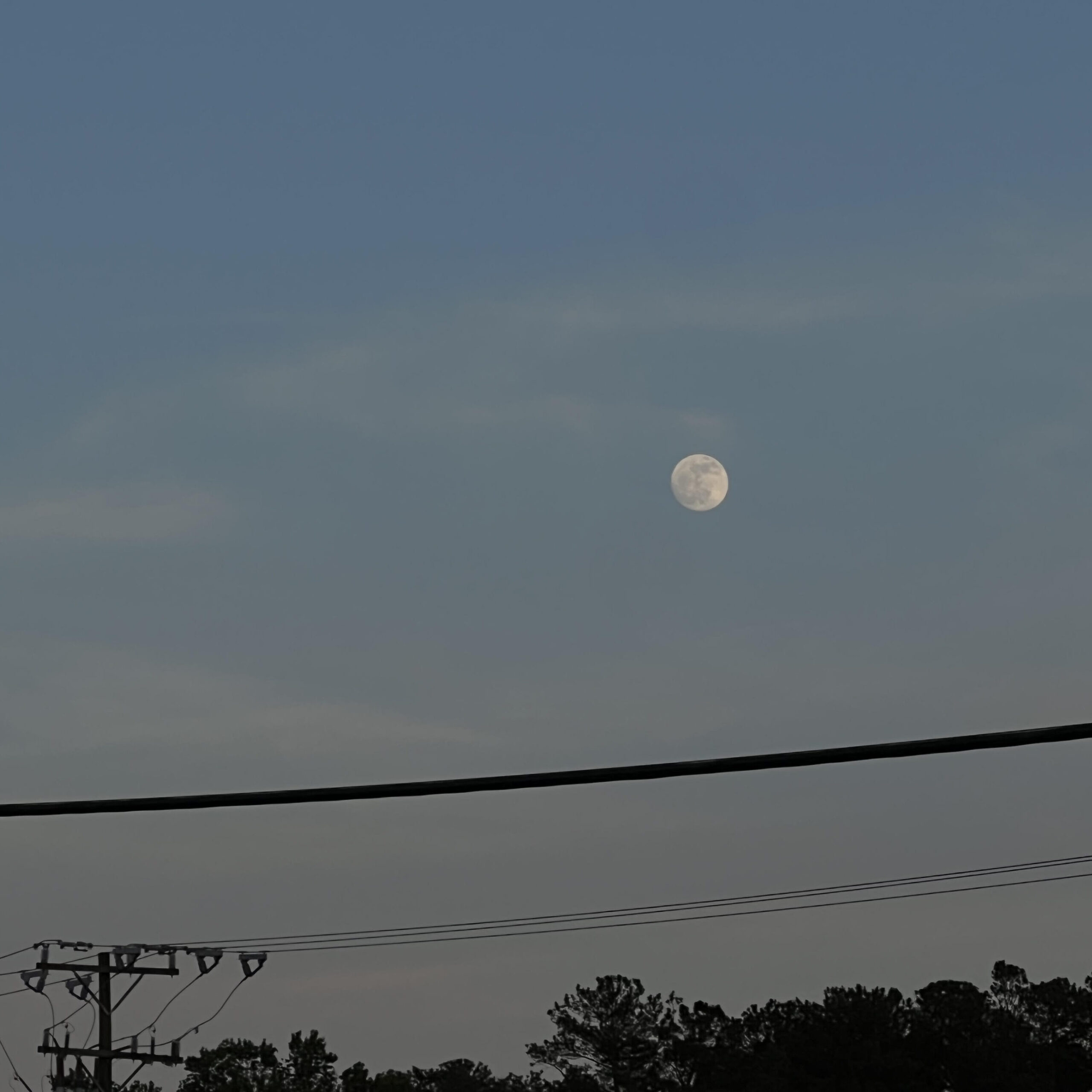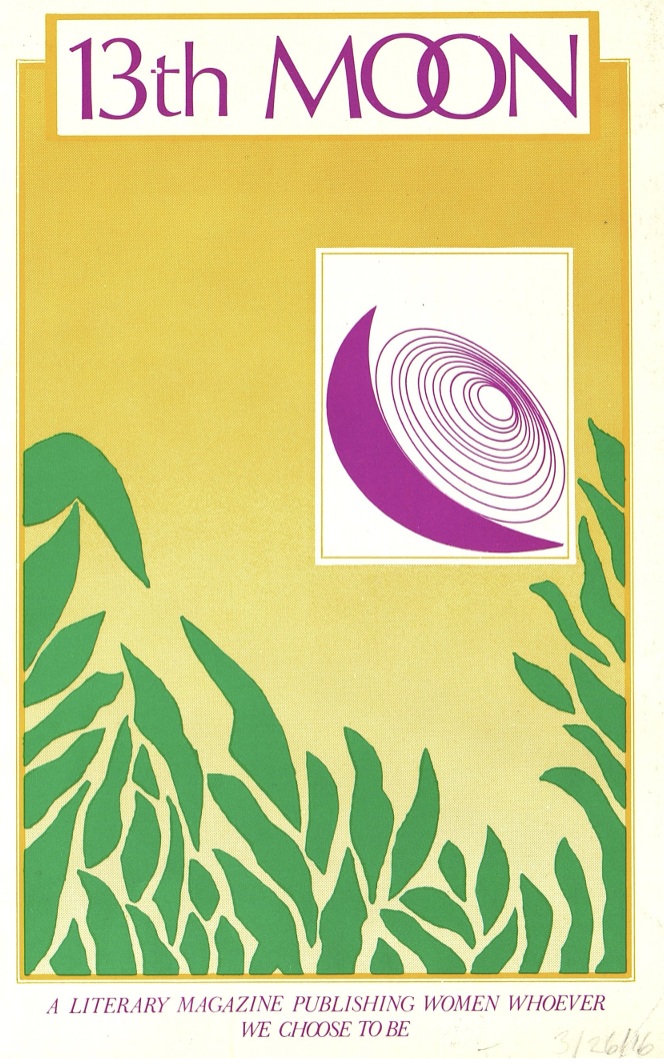But this Thanksgiving, I am determined to impress her. For the very first time, my mother is coming to me for a holiday. I will be the one in the kitchen. I’ve picked out this fancy recipe for the turkey stuffing. Yesterday afternoon after work I rushed over to the food co-op, not because it is the cheapest place but because they have the freshest food, sorted through crates of mushrooms and heaps of onions, picking out the best. I want my house to look beautiful, I want the food to be delicious. Everything has to be just right…
I’ve always felt that I had to prove something to my mother. Prove something to my mother? Prove everything to her. Everything I did had to meet her standards. Dinner will be perfect, the house looks beautiful, I am going to be witty and charming. She will see how I can keep the whole day flowing.
Anne Finger in “Basic Skills,” published in 13th Moon (Vol. 5, No. 1 & 2, 1980, pp. 37–47)
Easter 2023. I was in the middle of writing this Rabbit Hole when I got a taste of what womanhood means to me. I was unable to come home, but I missed the comforts of it, and so I got an idea: I was going to make my great-grandmother’s brownies.
I was hungry to learn what made the brownies so special. While I had written down what I thought was the recipe, my gut told me to call my mother. She had made these with my great-grandma countless times to the point that no recipe was needed. And thank God I did call her, because I had transcribed the recipe wrong into my cookbook.
What is it about holidays and food that brings us back to our mothers?
Below, in a climactic scene from the 2022 thriller “The Menu,” the female protagonist, Margot (portrayed by Anya Taylor Joy), declares to the (literally) cut-throat head chef (portrayed by Ralph Fiennes) that his food tastes “like it was made with no love.”
Chef responds, “This is ridiculous, we always cook with love, don’t we?… Everyone knows love is the most important ingredient.”
Between these lines, the cooks in the kitchen reply, “Yes, chef,” with an intensity that can only be described as militant, like a soldier to their drill-sergeant.
She replies, “You cook with obsession, not love.”
In this moment, the horror movie—set in the fine-dining kitchens of today, where tweezers have become an “essential tool”—eats away at the perception of what love is and gets to the heart of it.
The camera zooms in on the chef in a way that reminds me of a movie on the complete opposite end of the spectrum: the warm, feel-good Disney classic, “Ratatouille.”
There’s a scene where the cold, pretentious food critic, Anton Ego (ha-ha), melts after a bite of ratatouille transports him back to his childhood, where his mother’s own ratatouille was the cure for tears on a bad day.
Love is not attention. Love is not perfection. Love is not something one can add to the meal. Instead, it’s ‘baked’ into the muscle memory of making it. You stir with your arm, but it’s truly your heart that tells you when to stop at risk of overbeating the eggs, or when to stop adding milk to the frosting. Love is infused in every taste-test, in every pinch of this or that, and at the end, love is comes through in each and every bite.
I fully realized the heart-warming nature of this love—the nature of nurture—on Easter this year, when I handed off spoonfuls of uncooked brownie batter to my found-family, just like my mother used to do for me, as I’m sure her grandmother Amelia did for her, risk of salmonella be damned.
Passing down family recipes is no joke. It’s taken so seriously that some people choose to pass those recipes down using their very gravestones (New York Times).
Celebrating the holiday with a fresh batch of brownies made me think of the many acts of generosity and care that women are known for. So many revolve around holidays and celebrations. And it isn’t just women celebrating women. It’s celebrating women celebrating.
There are so many celebration traditions centered on women across the globe.
For example, perhaps the first major celebration a girl experiences is her transition into adolescence. In Latino/a/x communities, it is the quinceañera that marks the first foray into independence. Her family and friends come together for a night of celebration, all centered around her. Wearing a glittering tiara and a ballgown of taffeta and tulle, she transforms under a spotlight before her loved one’s very eyes.

Celebrating Latina Women
Catherine Tinker’s review of Cuentos: Stories by Latinas (edited by Alma Gomez, Cherríe Moraga, and Mariana Romo-Carmona)
13th Moon, special issue on “Narrative Forms” (Vol. 8, No. 1 & 2, 1984)
“The Quinceañera, a Rite of Passage in Transition“
New York Times (June 4, 2016)
In Jewish traditions, the celebration of the transition from girlhood to womanhood is the Bat Mitzvah.
I am not Jewish, nor do I speak Hebrew, so I always thought that the difference between Bar Mitzvahs and Bat Mitzvahs was one of a single letter. However, thinking on this, I quickly remembered that on birth certificates, the difference between M and F is also one of a single letter. Yet, there is often a world of difference between the histories and life experiences that these two letters represent.
Unlike Bar Mitzvahs, Bat Mitzvahs are a relatively new tradition. The first Bat Mitzvah took place only 101 years ago in 1922. It was a time when the fight for women’s rights was the subject of the day, given the passage of the 19th amendment in 1919, which granted women in the U.S. the right to vote.
Bar Mitzvahs, on the other hand, have been recorded as far back as the 13th century, where, according to Michael Hilton, “it took the form of a simple statement by the father that he was no longer responsible for his thirteen-year-old son.”
Bar Mitzvahs were traditionally a celebration of agency and independence from the family unit, an independence that allows individuality and character-building. It was thus striking to me that a similar celebration for women was so new.
This lead me to a sullen realization about how much responsibility women carry in their lives, but often without recognition and celebration.
This is a dynamic that happens across places and cultures, like so much of the work in 13th Moon shows. The limited recognition women receive is often related to ideals of domestic womanhood.
Kristina McGrath’s poem “The Visit,” published in 13th Moon in 1984, addresses how womanhood has been tied so often to the home. As discussed elsewhere in this Rabbit Hole, the 1960s and 1970s women’s movements challenged this association. Yet, McGrath’s poem stays away from either/or notions of womanhood and the home.
It brings to mind how the hearth is the heart of the home, and how it is often cultivated as a feminine space. The poem perfectly encapsulates the intricacies of home-making, and reclaims their power.

“You keep the entanglements of her company / You turn in her memory,” McGrath writes in the poem.
Anyone can stage a house, but the ability of a person to become a shelter for others, much like a home, requires the repetitiveness of making and re-making. It allows one to know others in their shelter so well that “each new growth” looks like a mile, not an inch. It requires stability, but much more than that—it requires safety. Safety to reveal the old and expose the new. The unspoken agreement that whatever is revealed stays between you, lives between you, and is understood between you, no explanation necessary. After all, they were once young like you.
Ideas of the home and womanhood so often bring to mind ideas of a “woman’s place.”
I say that the answer to the question, “Where is a woman’s place in the world?” is in fact, “Wherever she wants to be.”
It is the wanting, the agency, the choice, that is to be most celebrated.
WHERE TO NEXT?

I. Women, Becoming

II. Women Moving Through Time

III. Women in Music: The Personal and the Political

CONCLUSION: Women Who Write
